Badami is a small town in central Karnataka, where we are conducting a travel photography workshop from July 5 to 7, 2013. Also see more details about Badami, its location and attractions in an earlier post.
Here is a collection photographs of people of Badami.
Much of the population of Badami and surrounding areas depend on Agriculture for living. Most farmers have a small land holding and practice a traditional form of agriculture. Here is a farmer giving a wash to his bullocks in Agasthyateertha tank, perhaps after a hard day’s toil. The bullocks were delighted to be in the water and immediately went swimming after the mandatory wash was completed.
Agasthyateertha is a large tank at the eastern edge of the town. The place is full of activity throughout the day.
In a typical afternoon, you will see women coming to the tank wash clothes, men sitting on the bank and baiting for fish, tourists exploring the temples spread around the tank and local folk moving back and forth for some reason or the other.
Eeravva always seemed to have a cheerful disposition, as is evident from this photograph. I saw her and a few other woman were sitting on the veranda of the house, chatting and cleaning grains. There was a bit of excitement among the ladies when I took out the camera. They barely spoke first, but got chatty very quickly.
At first, Eeravva tried to pose and became stiff when I pointed the camera at her. I pulled back, smiled at her and said ‘you are supposed to smile’. The women around laughed, and Eeravva joined them too and said ‘I have a very big mouth’, indicating that she may not look very good smiling. The ice broken, I took a few pictures as she smiled. I was invited by them for a cup of tea soon after the photo session.
In a day or two of wandering Badami’s lanes, you will get used to a pattern in the way of life of its people. Women tend to sit together in front of the house, do some house work and yap with their neighbors. Kids, restless that they are, keep going back and forth on the narrow streets, more often than not in their school uniforms. The younger men go out of the house to work. Old men have difficulty in spending time. They gather under the ficus tree, in front of the temple, or wherever there is some space to sit, discussing world changing events, gazing at other people walking on the street or trying to strike conversation with anyone and everyone.
Somewhere in the narrow lanes of Badami, this girl insisted that I take her photograph along with her little brother. I was more than happy to oblige.
I was charmed by this small eatery painted in blue and wanted to take a few photographs. I stopped by in the pretext of having a cup of tea and started a conversation. In the fifteen minutes that I was there, we talked about a variety of things including local delicacies, the grand annual fair that happens here (in Banashankari, a village just outside Badami) and about his son who lives in Bangalore. He even borrowed my phone to make a call (this was before the days when cell-phones could be found with everyone), which I graciously offered. In the end, he refused payment for my tea despite my insistence.
Not far from Badami is the small temple-village of Mahakuta, a leafy green oasis that stands out in the middle of the brown landscape. The temple-tank, unlike in many other temples, is fed from a perennial spring and remains fresh all through the year. And the best thing about it is, it is open to anyone who cares for a swim. Not surprisingly, the place is a hit with kids.
The temple of Mahakuta is more than a thousand years old and one of the few ancient temples in the area that is still in use. The thick grove of ficus trees and a traditional atmosphere bring in a lot of charm to this beautiful place.
Visit the travel photography workshop page to know more about the upcoming workshop on July 5 to 7, 2013.

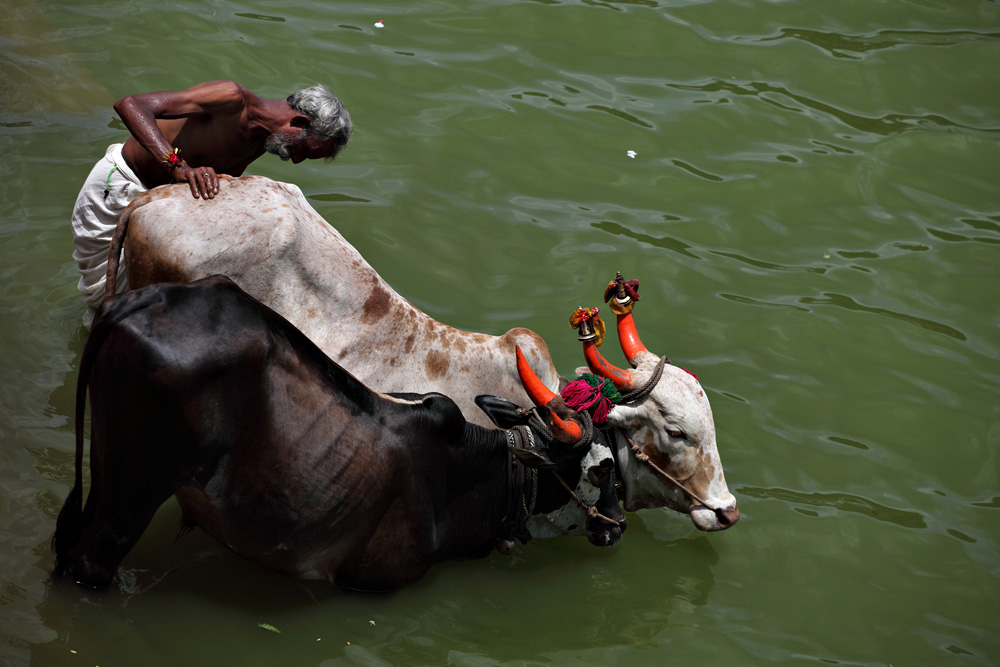
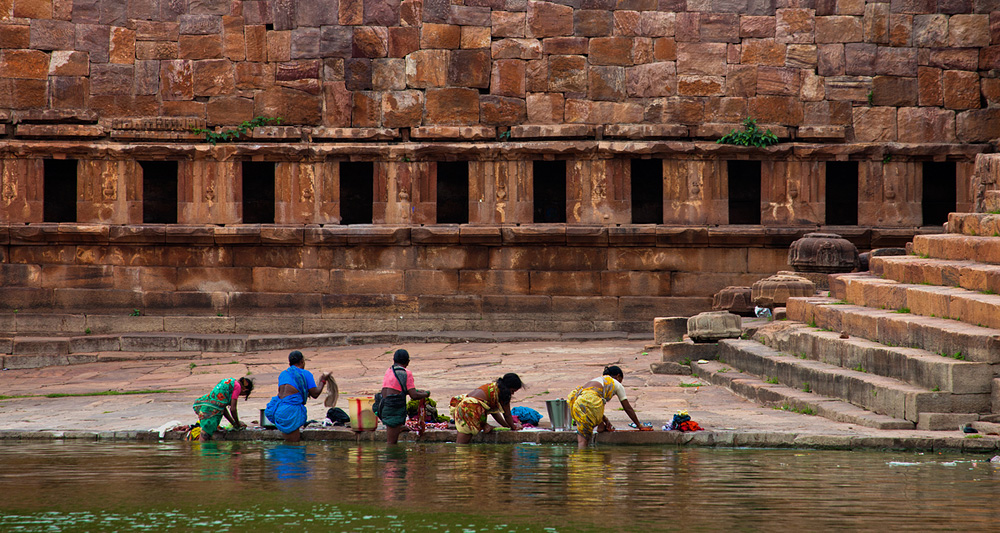
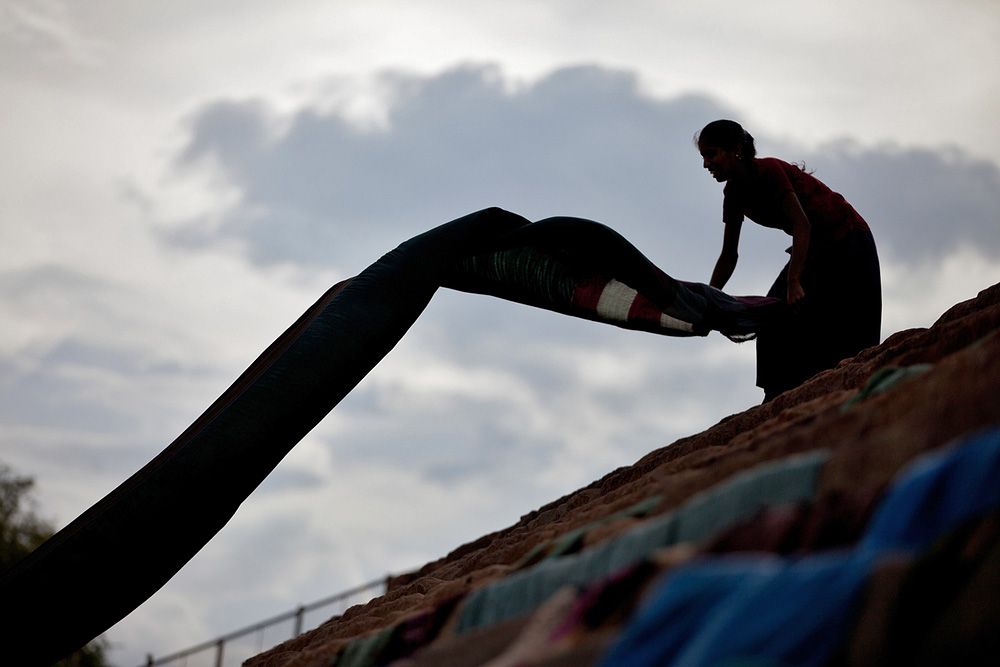
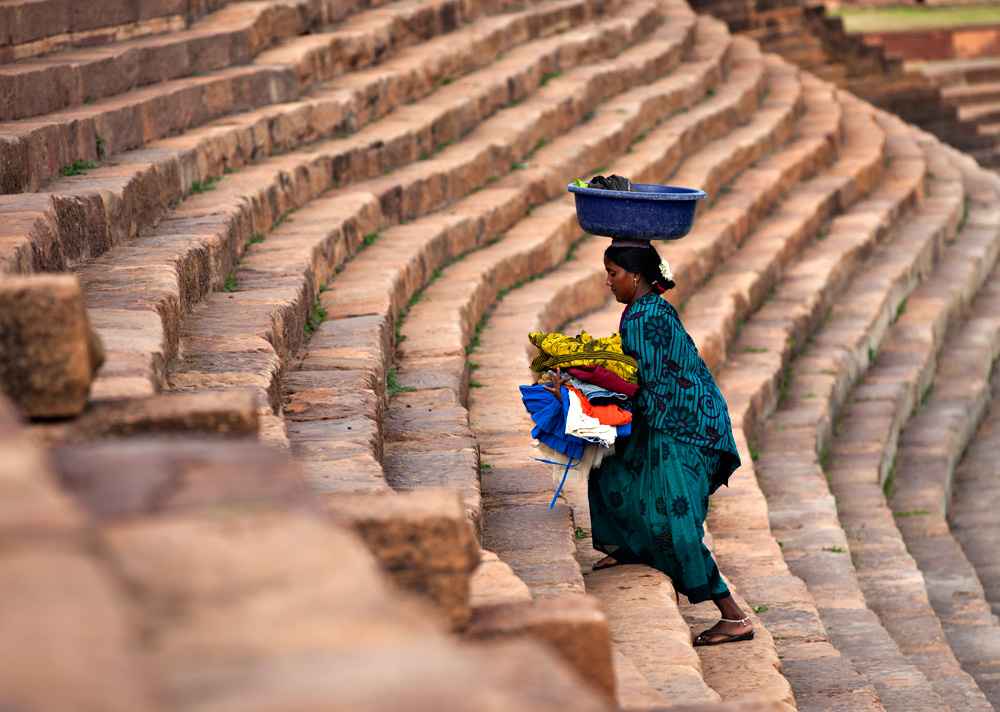

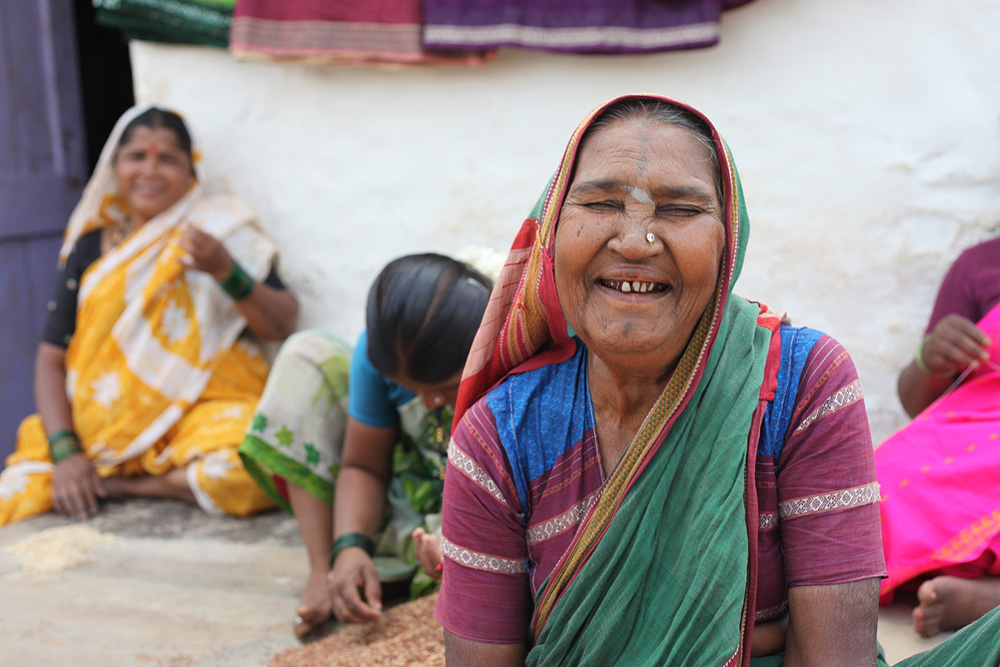
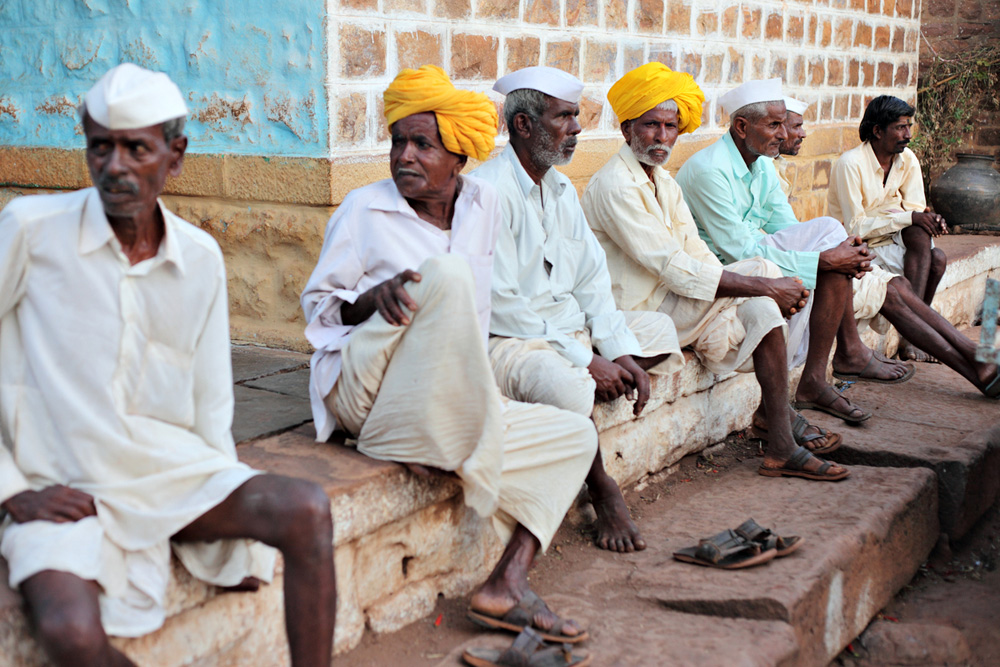
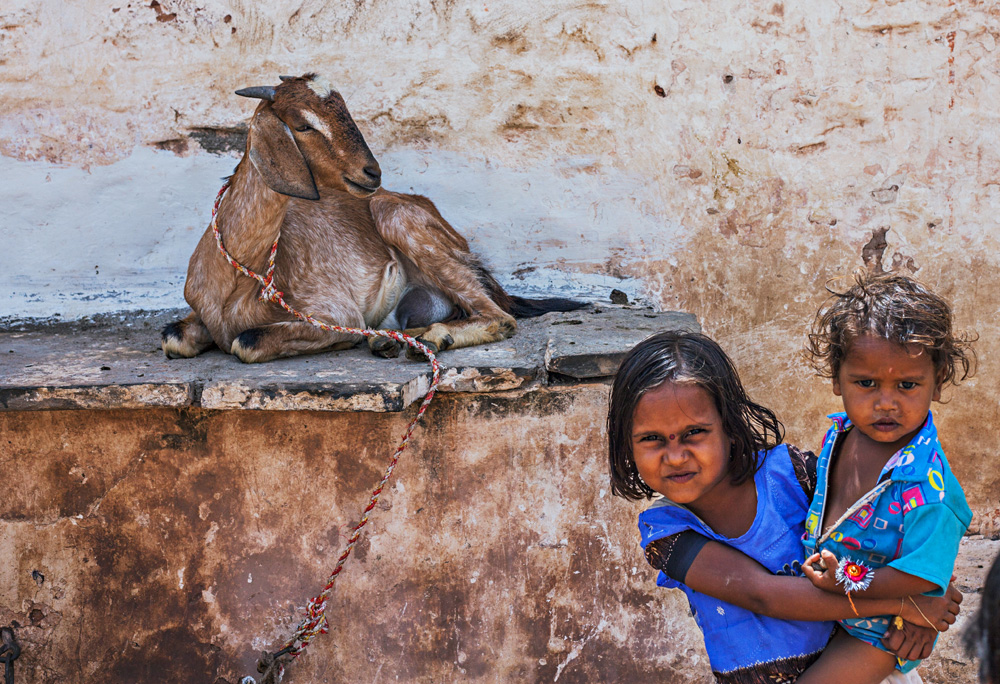
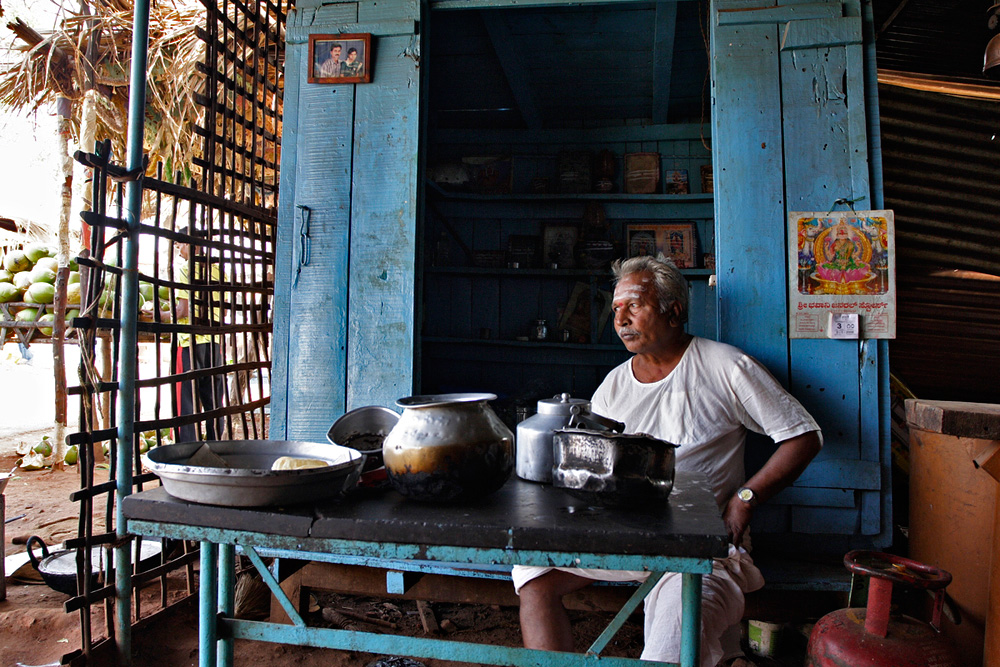
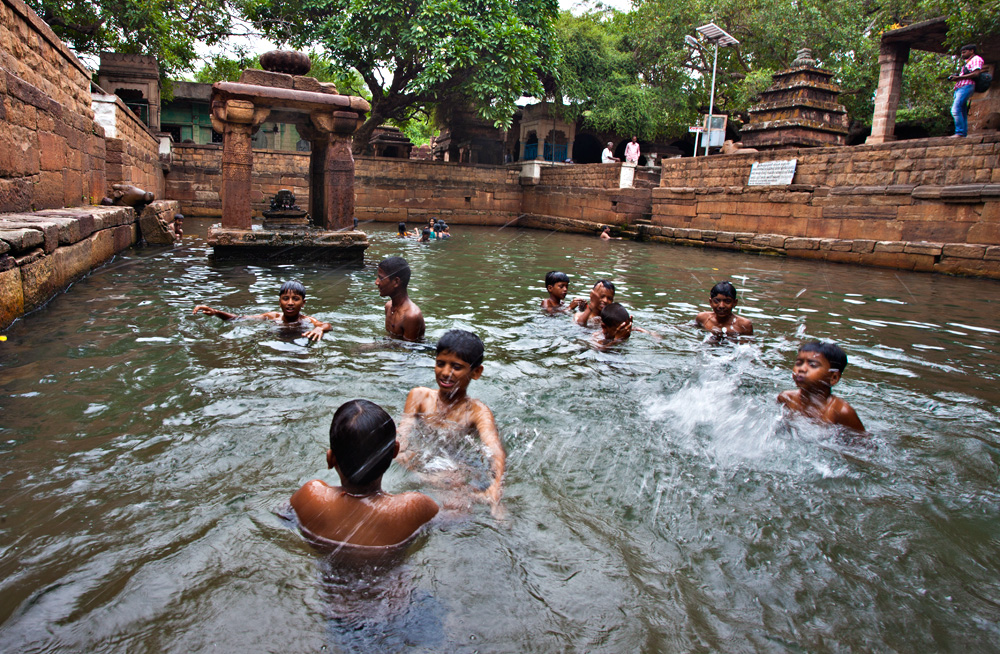


One Comment